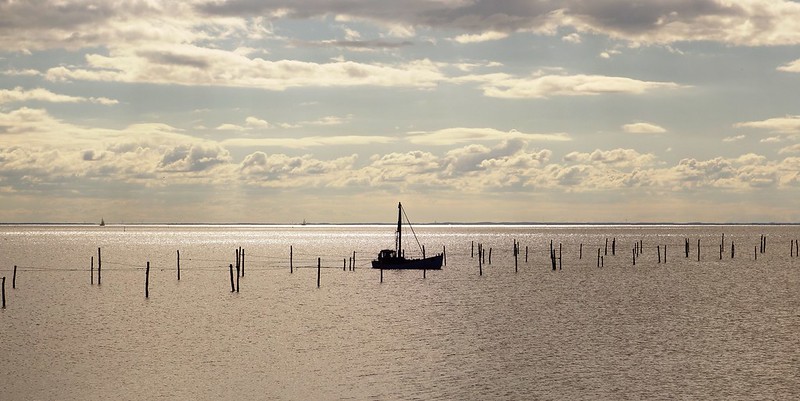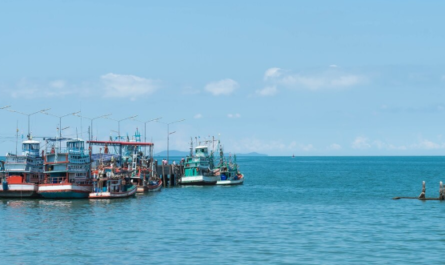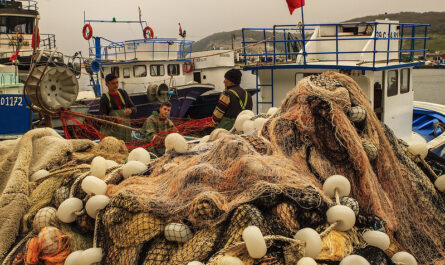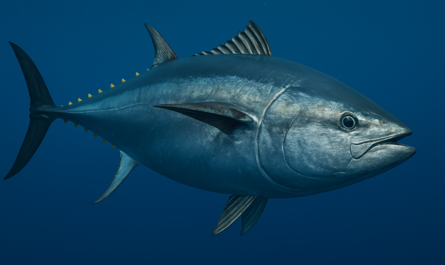The North Atlantic is one of the world’s most productive fishing grounds, providing a vital source of food, livelihoods, and economic stability for coastal communities across Europe, North America, and beyond. However, the increasing demands on fish stocks due to population growth, industrialization, and climate change have put immense pressure on marine ecosystems. This raises an urgent question: how can we balance the needs of the fishing industry and human communities while protecting the health of our oceans?
Sustainable fishing practices in the North Atlantic aim to achieve this balance, ensuring that fish populations are managed in a way that allows them to replenish while supporting the economy and cultural heritage of coastal communities. This article explores the different sustainable fishing practices in the North Atlantic, the challenges they face, and how they contribute to protecting the future of marine resources.
The Importance of Sustainable Fishing in the North Atlantic
Fishing has been a vital part of life for communities around the North Atlantic for centuries. Countries like Iceland, Norway, Canada, and the United States have deep cultural and economic ties to the fishing industry, and many people in these regions rely on the ocean for their livelihoods. The North Atlantic supplies a significant portion of the world’s seafood, with key species like cod, haddock, herring, mackerel, and lobster forming the backbone of local and international seafood markets.
However, overfishing, habitat destruction, bycatch (the capture of unintended species), and climate change have put these resources at risk. Overfishing in particular depletes fish stocks faster than they can reproduce, threatening not only the species themselves but also the ecosystems they inhabit. When fish populations decline, the entire marine food web can be disrupted, affecting other marine species and the overall health of the ocean.
Sustainable fishing practices are essential for maintaining a healthy and balanced ecosystem. These practices aim to ensure that fish populations are harvested at a rate that allows them to recover, thereby supporting biodiversity and the long-term productivity of the ocean. Sustainable fishing also helps protect the livelihoods of future generations by ensuring that fish stocks remain viable.
Key Sustainable Fishing Practices in the North Atlantic
There are several sustainable fishing practices currently in use in the North Atlantic that help protect fish populations, minimize environmental impact, and support economic stability. These methods range from improved management systems and fishing technologies to habitat restoration efforts.
1. Catch Limits and Quotas
One of the most effective tools for sustainable fishing in the North Atlantic is the use of catch limits and quotas. Regulatory bodies, such as the International Council for the Exploration of the Sea (ICES) and the North Atlantic Fisheries Organization (NAFO), set catch limits based on scientific data to determine the maximum allowable catch for each fish species. By setting these limits, they aim to prevent overfishing and ensure that fish populations have time to replenish.
For example, Atlantic cod, once a staple of North Atlantic fisheries, experienced severe overfishing, leading to the collapse of some cod populations in the 1990s. Since then, strict quotas have been imposed, particularly in areas like the Grand Banks and the Gulf of Maine, to help the species recover. While recovery has been slow, these regulations are crucial in rebuilding fish stocks over time.
2. Bycatch Reduction Techniques
Bycatch—the capture of unintended species, including dolphins, sea turtles, and seabirds—poses a significant problem in many fisheries. Bycatch not only threatens non-target species but can also disrupt ecosystems and cause waste, as many bycatch species are discarded.
To address this issue, sustainable fisheries in the North Atlantic employ several techniques to reduce bycatch:
- Modified Fishing Gear: New technologies such as selective nets and traps are designed to allow non-target species to escape. For example, in the lobster fishery, biodegradable “escape hatches” are included in lobster traps to reduce the risk of ghost fishing (where lost traps continue to catch marine life).
- Bycatch Reduction Devices (BRDs): In trawl fisheries, BRDs are installed to allow non-target species to escape. For example, turtle excluder devices (TEDs) are used in shrimp trawling to reduce sea turtle bycatch.
- Seasonal and Spatial Closures: By limiting fishing activities during spawning seasons or in specific areas where vulnerable species are concentrated, fisheries can reduce bycatch. For instance, in the Gulf of Maine, certain areas are closed during critical spawning periods to protect groundfish populations.
3. Ecosystem-Based Fishery Management (EBFM)
Ecosystem-Based Fishery Management (EBFM) is an approach that considers the entire marine ecosystem rather than focusing on single species. EBFM takes into account predator-prey relationships, habitat needs, and environmental changes to create a more holistic approach to fishery management. This practice is increasingly being adopted in the North Atlantic to promote a more balanced and resilient ecosystem.
Under the EBFM framework, management decisions consider factors such as the impact of fishing on habitats and the role of specific species within the food web. For example, forage fish like herring and mackerel are vital for the diets of larger species like tuna and whales. EBFM recognizes the importance of these small fish in the ecosystem and limits their catch to ensure that predator species also have sufficient food.
4. Marine Protected Areas (MPAs)
Marine Protected Areas (MPAs) are designated regions of the ocean where fishing and other extractive activities are restricted or prohibited. MPAs serve as safe zones for fish populations to breed and grow, which can enhance fish stocks and benefit surrounding fisheries as fish migrate outside protected areas.
The North Atlantic has several MPAs, such as the Northeast Canyons and Seamounts Marine National Monument off the coast of New England. This area protects critical habitats for deep-sea corals, whales, and other marine life, while also providing a refuge for commercially important species. MPAs are an effective tool in rebuilding fish stocks, especially for species that have experienced significant declines due to overfishing.
5. Sustainable Aquaculture
Aquaculture, or fish farming, is becoming an increasingly important component of the seafood industry, especially as wild fish stocks face mounting pressure. When done responsibly, sustainable aquaculture can reduce the burden on wild populations by providing an alternative source of seafood. Sustainable aquaculture practices in the North Atlantic focus on minimizing environmental impact, using responsible feed sources, and avoiding overcrowding, which can lead to disease.
In Norway, the world’s leading producer of farmed Atlantic salmon, sustainable aquaculture practices include strict regulations on fish feed, waste management, and the prevention of disease spread to wild fish populations. Innovative practices, such as offshore fish farms and recirculating aquaculture systems, are helping to make aquaculture more sustainable while providing an alternative to wild-caught fish.
6. Certification and Traceability Programs
One of the most effective ways to promote sustainable fishing practices is through certification and traceability programs. Organizations like the Marine Stewardship Council (MSC) certify fisheries that meet strict sustainability criteria, including adherence to scientific catch limits and bycatch reduction measures. MSC-certified products carry a label that assures consumers the seafood was sourced responsibly.
Certification programs encourage best practices and allow consumers to make informed choices, supporting fisheries that prioritize sustainability. Additionally, traceability programs enable tracking of seafood from the ocean to the plate, ensuring transparency and accountability in the supply chain.
Challenges Facing Sustainable Fishing in the North Atlantic
Despite these efforts, sustainable fishing in the North Atlantic faces several challenges. Climate change, illegal fishing, and market pressures all contribute to the complexities of maintaining sustainable fish populations.
1. Climate Change
Climate change poses a major threat to North Atlantic fisheries, as rising sea temperatures, ocean acidification, and shifting currents affect fish distributions, spawning cycles, and habitats. For instance, cod populations in the Gulf of Maine have declined partly due to warming waters, which have altered the species’ habitat and breeding patterns.
To address these changes, fisheries must adopt adaptive management strategies that account for shifting species distributions and environmental conditions. Continued research and monitoring are essential for understanding how climate change impacts fish populations and for developing effective management responses.
2. Illegal, Unreported, and Unregulated (IUU) Fishing
Illegal, unreported, and unregulated (IUU) fishing is a major issue that undermines sustainable fishing efforts. IUU fishing depletes fish stocks, disrupts ecosystems, and creates unfair competition for law-abiding fishers. In the North Atlantic, international cooperation and enforcement are critical for combating IUU fishing.
Technologies such as satellite tracking and vessel monitoring systems are being used to detect and deter illegal fishing activities. International agreements, like the Port State Measures Agreement (PSMA), require vessels to provide documentation of their catches, making it harder for illegally caught fish to enter the market.
3. Market Demand and Consumer Awareness
Market demand for popular fish species, such as Atlantic cod and salmon, can put pressure on fisheries, even those that operate sustainably. Consumer awareness and education play a key role in supporting sustainable practices. When consumers choose sustainably sourced seafood, they create a market incentive for responsible fishing practices.
Education campaigns, labeling programs, and outreach by organizations such as the MSC help consumers make informed choices that support sustainable fisheries.
The Future of Sustainable Fishing in the North Atlantic
The future of sustainable fishing in the North Atlantic depends on continued collaboration among governments, industry, scientists, and consumers. By balancing marine health with human needs, sustainable fishing practices can help ensure the longevity of fish populations and the health of ocean ecosystems.
Emerging technologies, such as AI-driven monitoring systems and eco-friendly fishing gear, promise to enhance sustainability efforts by improving data accuracy and reducing bycatch. Additionally, expanding MPA networks and supporting sustainable aquaculture can alleviate pressure on wild fish stocks.
As awareness of sustainable practices grows, both the fishing industry and consumers can play a role in protecting marine resources. The choices we make today will determine whether future generations can enjoy the benefits of a healthy North Atlantic ecosystem and the communities that rely on it.
Conclusion: Sustaining the North Atlantic for Future Generations
Sustainable fishing in the North Atlantic is not only about preserving fish stocks; it’s about maintaining a balanced relationship between people and the ocean. Through careful management, innovative technology, and a commitment to ecological health, we can protect marine biodiversity while supporting the economies and cultures of coastal communities. By promoting and supporting sustainable fishing practices, we can ensure that the North Atlantic remains a thriving resource for generations to come.



